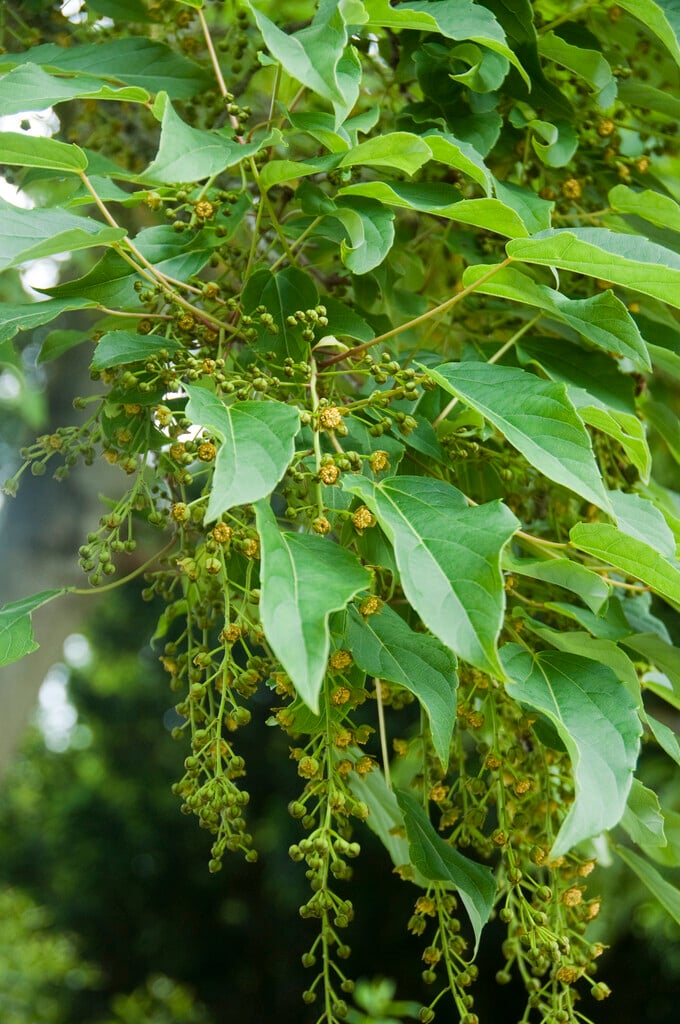Idesia polycarpa
Igiri tree
A deciduous tree with an open, branching habit and large, heart-shaped, slightly toothed, glossy green leaves, held on reddish stems and sometimes tinted red when young. Long, hanging clusters of small, fragrant yellow-green flowers are produced on mature trees in midsummer. If pollinated, these are followed by hanging clusters of round red berries on female trees, which sometimes persist into winter

Buy this plant
Size
Ultimate height
8–12 metresTime to ultimate height
20–50 yearsUltimate spread
Wider than 8 metresGrowing conditions
Moisture
Moist but well–drainedpH
Neutral, AcidColour & scent
| Stem | Flower | Foliage | Fruit | |
| Spring | Green Red | |||
|---|---|---|---|---|
| Summer | Yellow Green | Green | ||
| Autumn | Green Yellow | Red | ||
| Winter | Red |
Position
- Full sun
- Partial shade
Aspect
East–facing or South–facing or West–facing
Exposure
Sheltered Hardiness
H5Botanical details
- Family
- Salicaceae
- Native to GB / Ireland
- No
- Foliage
- Deciduous
- Habit
- Spreading branched
- Name status
Correct
- Plant range
- S China to Temp E Asia
How to grow
Cultivation
Grow in deep, moderately fertile, moist but well-drained, neutral to slightly acid soil in full sun or light shade. Female trees need a male tree nearby to produce berries reliably
Propagation
Propagate by softwood cuttings in late spring or by semi-ripe cuttings in midsummer
Suggested planting locations and garden types
- Architectural
Pruning
Minimal pruning required, see pruning group 1
Pests
Generally pest-free
Diseases
Generally disease-free
Love gardening
Sign up to receive regular gardening tips, inspiration, offers and more
View our Privacy Policy
Get involved
The Royal Horticultural Society is the UK’s leading gardening charity. We aim to enrich everyone’s life through plants, and make the UK a greener and more beautiful place.